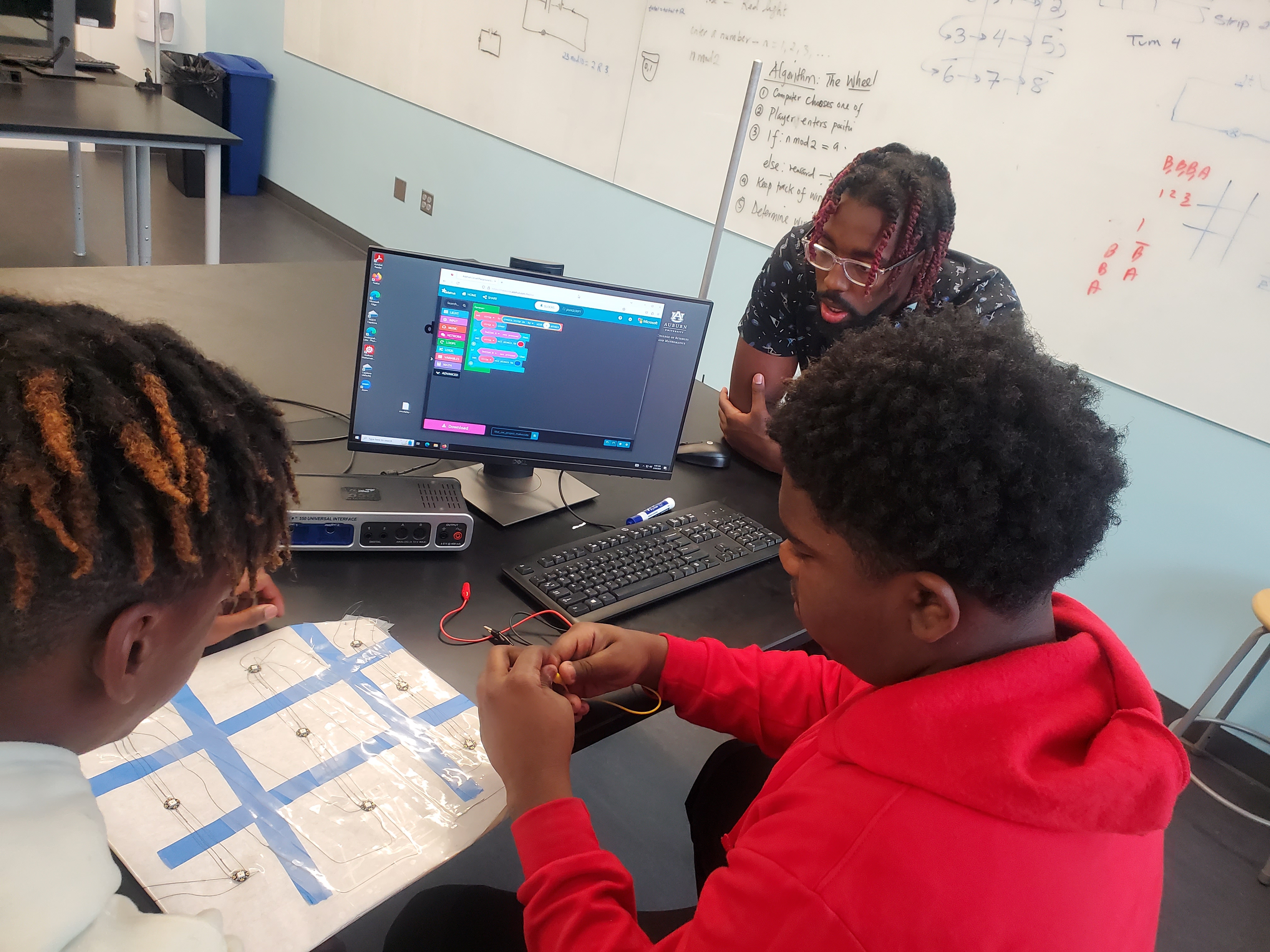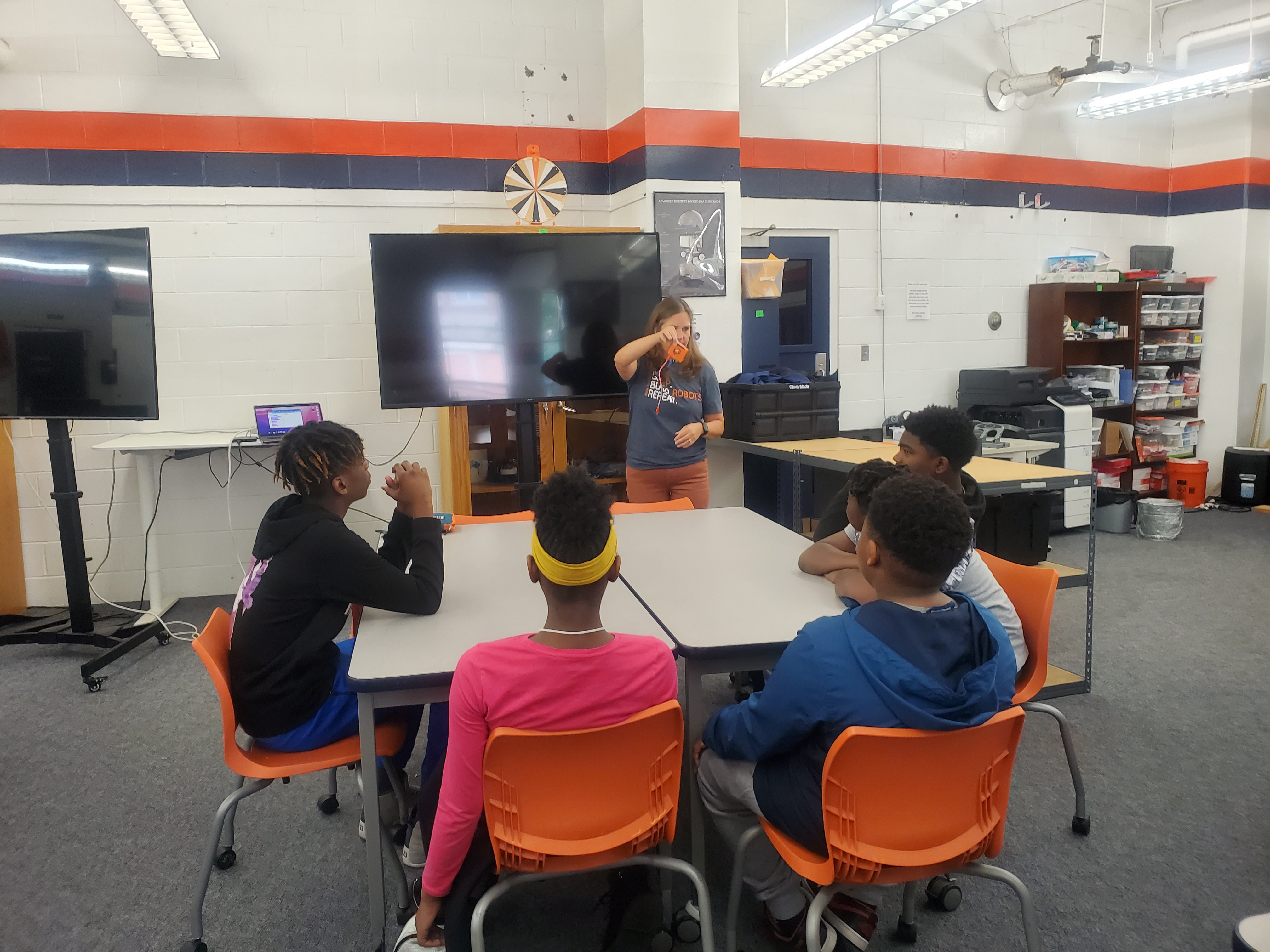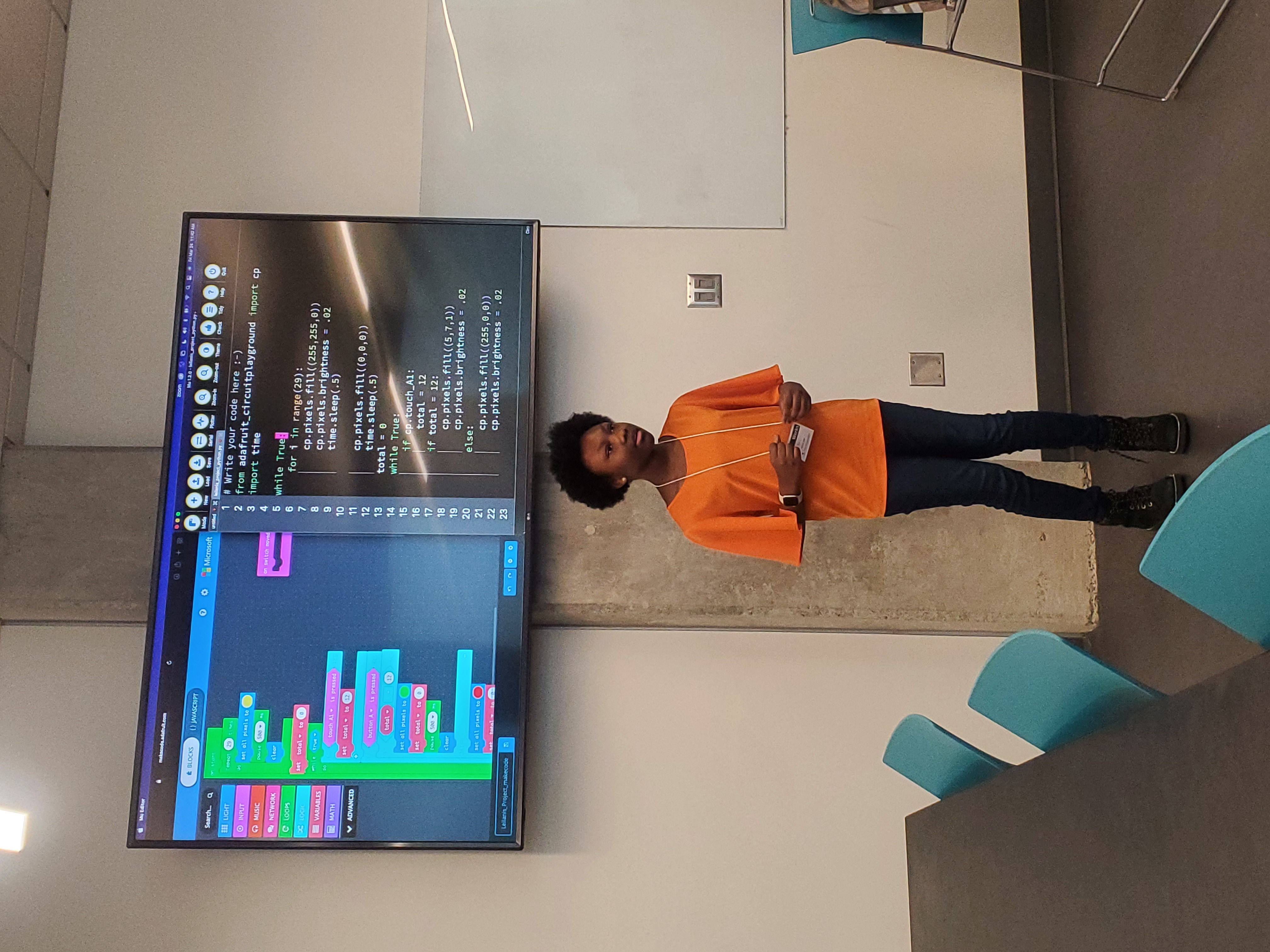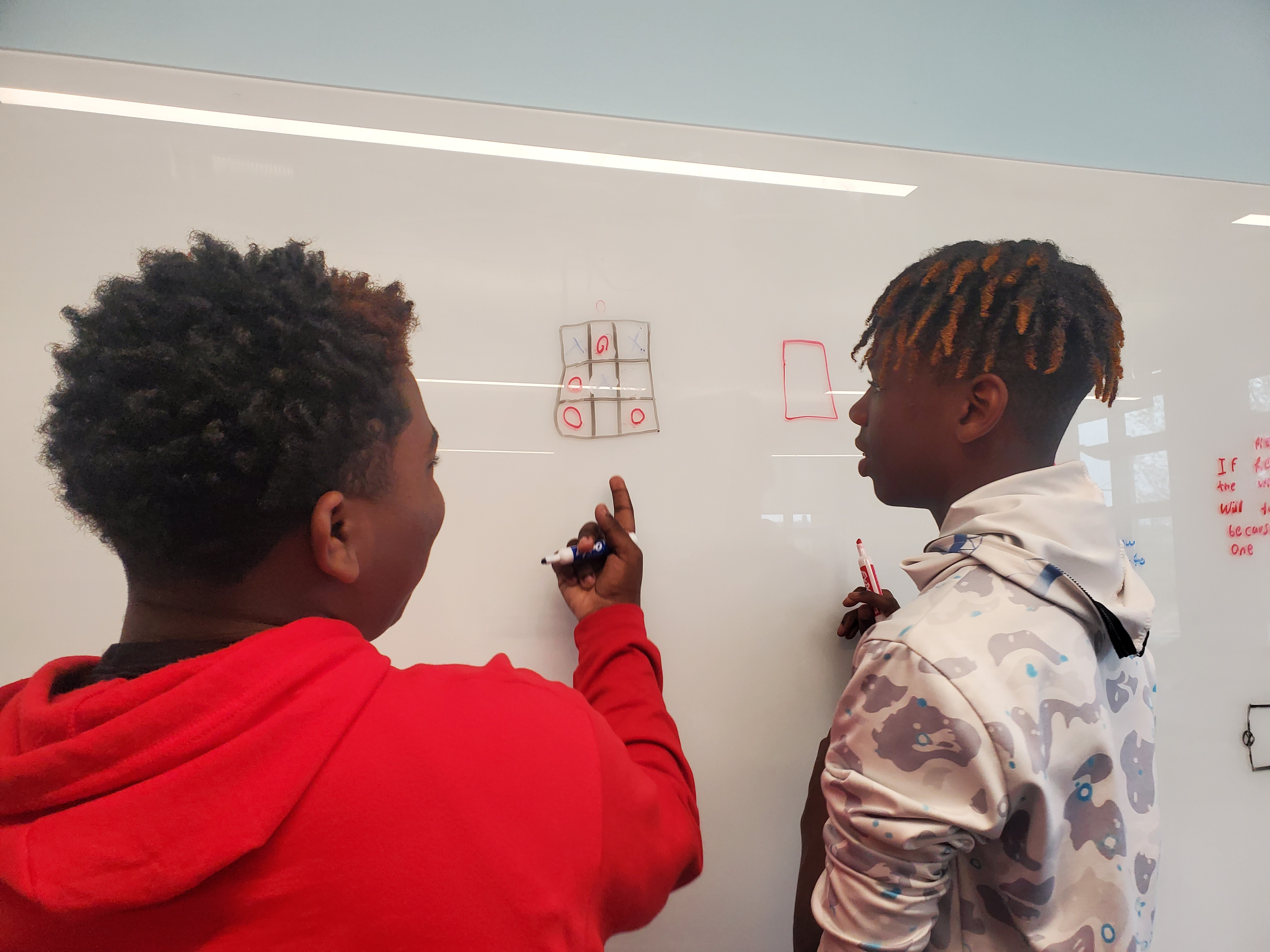COSAM News Articles 2023 April COSAM graduate students lead coding workshop for underrepresented adolescents
COSAM graduate students lead coding workshop for underrepresented adolescents
On Saturday, March 25th, five elementary and middle school students from the Auburn/Opelika area showcased projects they had coded and built themselves during CODEWorks. Developed by COSAM graduate students Jalaan Avritte and Ashley Williams, Williams explained that “the purpose [of CODEWorks] is to expose and teach historically underrepresented groups in STEM about coding skill sets to try and give them the skills to be successful in the field.” Over the course of seven workshops, the fourth to seventh grade students were taught basic coding, came up with their own idea for a project and were given the resources and assistance to build that project.
The first two days of CODEWorks introduced the students to coding scripts and circuitry by creating a circuit that turned on a lightbulb and recreating that circuit in code. Two weeks later, the students began brainstorming ideas for their project. “We said, ‘so here are the things that you can do, think about what you want to create.’ There are a lot of components to it, but it’s literally up to your imagination what you want to do,” Avritte said about the students’ brainstorming process.
Through funding from the COSAM Office of Inclusion, Equity and Diversity (OIED), each student was provided with an Adafruit Circuit Playground, which is a circuit board that does not require a soldering iron to create circuits. According to Avritte, “playing around and trial and error,” were helpful parts of sparking ideas for the students.
With a little guidance, the students had their ideas in place and started to build them. Avritte and Williams would also help with troubleshooting and some of the more difficult physical builds, but each student was able to make their project idea a reality and show it off at the CODEWorks closing ceremony. Williams highlighted how these students were very well supported, having parents, grandparents, and even personal mentors present in the crowd to celebrate their accomplishments.
Looking back on the program, Williams particularly valued being able to help two of the students specify the coding logic for their project, which was to create a tic-tac-toe game. “I told them to go to the board and play tic-tac-toe,” Williams began. “What is it that you’re doing? Now, they started getting competitive,” she laughed, but the point of that activity was to get them to think about how to represent what they drew on the board in code, and it seemed to work; they were able to play each other in a game of tic-tac-toe that they coded. Avritte on the other hand, helped a student create a controller to play a videogame that he also created himself. “[The student] was really excited for this, and for him to actually get something he liked out of it…” Avritte finished his thought with a smile, “seeing it all come together, that was nice.”
Latest Headlines
-
04/23/2024
-
04/18/2024
-
04/18/2024
-
04/18/2024
-
04/17/2024




